The demand for open source text to speech technology has grown rapidly in recent years due to its capability of analyzing text and producing lifelike, expressive voices without expensive licensing fees. Unlike commercial tools, the open source voice synthesizer provides greater control to customize voices, improve models, and adapt them for diverse use cases, from accessibility tools and educational platforms to virtual assistants and creative media. In this article, you’ll explore the best open source TTS models and discuss how to make the right choice for your project.
Part 1: Top 6 Open Source AI Text to Speech Generators
Here are the six best TTS models that combine advanced AI voice synthesis, natural speech quality, and flexible integration for developers. Let’s dive into their details:
1. eSpeak
eSpeak is a lightweight and easy-to-use text to speech open source JS model that helps generate clear and smart speech at a fast speed. It supports over 40 languages and works on Windows, macOS, Linux, and Android. Though the voice output sounds robotic, it’s used for accessibility and assistive tools, where resources are limited.
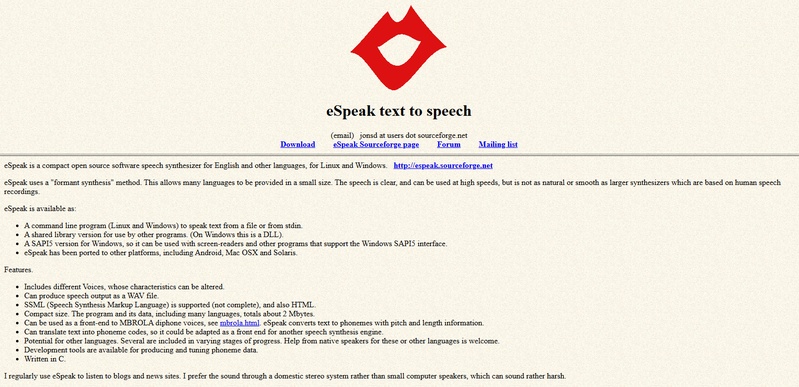
Pros:
![]()
-
Highly portable
-
Simple to set up
-
Support multiple voices
Cons:
![]()
-
Limited features
-
Lack of customization options
Best for: Screen readers, robotics, and embedded systems
2. Fish Speech
Fish Speech is a leading open source AI text to speech model with an innovative DualAR architecture. Developed for research and production, it delivers very precise voice quality and customizable speech. It supports text input in multiple languages with hours of training data for English, Chinese, and Japanese. You can also clone voices with 10-30 second samples.
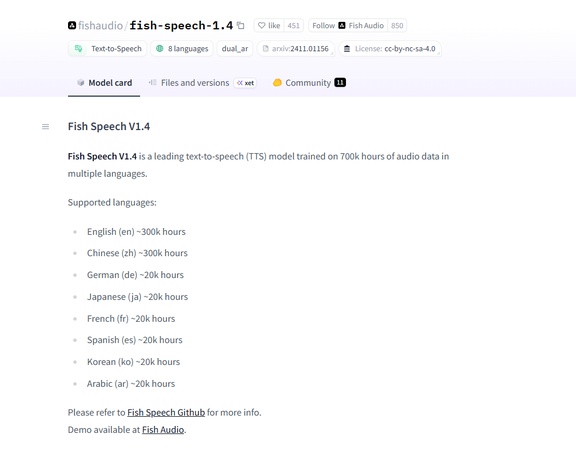
Pros:
![]()
-
Realistic AI-generated voices
-
Exceptional performance in TTS
-
Fast processing
Cons:
![]()
-
Resource intensive model
-
May require technical expertise
Best for: Developers seeking neural TTS for superior quality
3. Mozilla TTS
Mozilla TTS is a popular open source TTS engine that incorporates advanced neural network architectures, especially sequence-to-sequence models to generate natural speech. Built using deep learning, it allows fine-tuning for custom voice creation and supports multiple backends like Tacotron 2, Glow-TTS, and HiFi-GAN. It even allows training your voice models using your own dataset.
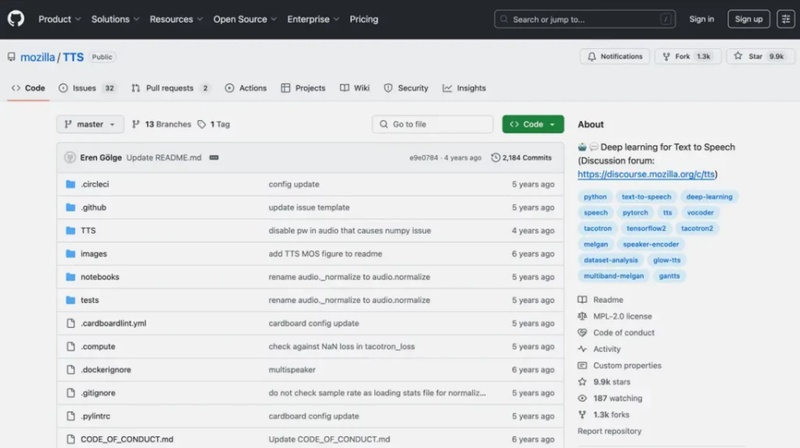
Pros:
![]()
-
Free to use
-
Highly customizable
-
Active community
Cons:
![]()
-
Require high processing power
-
Limited language support
Best for: Accessibility, research, and custom voice projects
4. MaryTTS
Developed in Java, MaryTTS is a versatile open source voice synthesizer with a modular design. It not only helps build custom text to speech systems but also supports creating new voices from audio recordings. What makes this open TTS model stand out is the natural sounding speech, flexible input format, multilingual support, and high customization capabilities.
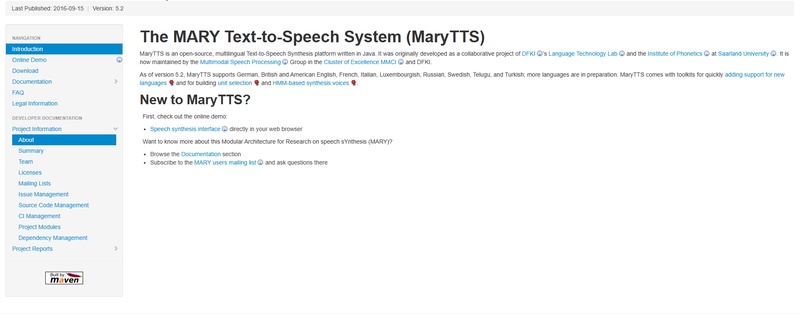
Pros:
![]()
-
Easy integration
-
Natural-sounding voices
-
Voice import tool
Cons:
![]()
-
Outdated voice quality
-
Learning curve for beginners
Best for: Education, language learning, and research
5. Kokoro
Kokoro is a modern yet lightweight open source text to voice model known for clear, expressive voice output and a fast speed. Built with advanced neural network architectures, it delivers smooth, natural intonation and supports multiple languages. It’s designed for both researchers and developers who want professional-grade voice synthesis without depending on commercial APIs.

Pros:
![]()
-
Quick and efficient
-
Easy to integrate
-
Cost effective solution
Cons:
![]()
-
Limited pretrained voices
-
No voice cloning option
Best for: Content creators, educators, and app developers
6. ChatTTS
ChatTTS by OpenAI is an innovative open source AI voice generator optimized for conversational applications. It excels at producing natural, context-aware speech in English and Chinese. You can also control elements like pauses and laughter for flexibile dialogue delivery. Its other features include multi-speaker synthesis, voice conditioning, and support for audio generation using Python scripts.
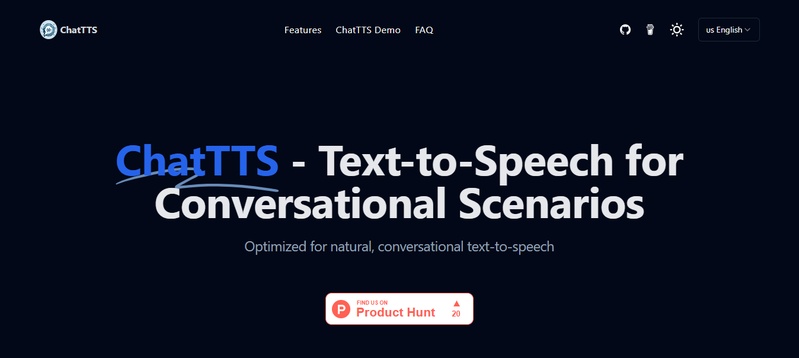
Pros:
![]()
-
Fast interference
-
Low latency responses
-
Offer built-in voice prompts
Cons:
![]()
-
Stability issues
-
Limited language support
Best for: AI chatbots, virtual assistants, and real-time agents
Part 2: What to Consider when Choosing Opensource TTS Models
Selecting the best open source text to speech tool depends on your project’s requirements. However, here are a few key factors to consider:
1. Speech Quality: The quality of the synthesized speech is important. Look for an open TTS model that can produce smooth, expressive, and natural-sounding speech.
2. Language Support: Some models specialize in English, while others support various languages and accents. Always ensure the chosen model supports the language you need.
3. Customization Features: To enhance user experience, choose an opensource text to speech tool that allows you to fine-tune voice pitch, speed, and emotional tone.
4. Resource Requirements: TTS models may need GPUs and significant processing power to train or run efficiently. Find a lightweight option for low-resource environments.
5. Latency: Fin low latency model for fast text to voice conversion, especially for real-time interactions like chatbots or voice assistants.
6. Usage Rights: Open source licenses vary. Some permit commercial use, while others have restrictions. Always review the license to ensure compliance with your requirements.
Part 3: Best Free Text to Speech Generator Online
While text to speech open source systems are great for developers, non-technical users often prefer online tools. In this regard, BlipCut AI Voice Generator should be the way to go.
This remarkable browser-based TTS tool helps generate high-quality commercially usable voices for professional content like ads or marketing videos. You can also access its library of over 600 realistic voices in a variety of languages. In addition, it uses cutting-edge technology to instantly transform written words into lifelike speech with high precision.
Key Features:
-
Convert text to speech in 40+ languages and accents
-
Help create and add voiceovers directly to your video files
-
Support using multiple voices in a video to bring diversity
-
You can even add pauses, adjust speech rate, and other settings to achieve the desired output
-
Allow downloading the output audio and script separately
Steps to Use Text to Speech Generator Online:
Step 1. Access the TTS Tool
The first step is to open the official BlipCut website and click “More Tools” to select the “Text to Speech” tool. Now, tap the “Create Voiceover” tab to proceed.

Step 2. Input Text and Select Voice
It’s time to type the script and choose the desired voice and the language. You can also add pauses or blocks if needed. Then, press “Voiceover” at the bottom.

Step 3. Download Audio
Once the voiceover is generated, listen to it. If it’s okay, hit the “Download” tab and pick the “Audio” or “Script” option. That’s all!

Conclusion
Today, text to speech technology is more powerful and accessible than ever. Whether you want to create a custom voice assistant, localize content, or experiment with voice synthesis, this post has provided open source AI text to speech options for developers and creators alike. You can choose the one that suits your needs. However, if you need a free text to speech generator online, try BlipCut Voice Generator for its user-friendly interface and high-quality output.
Leave a Comment
Create your review for BlipCut articles



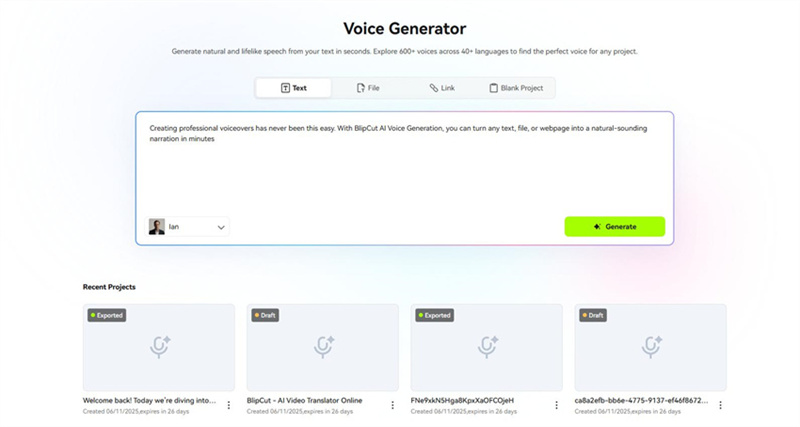
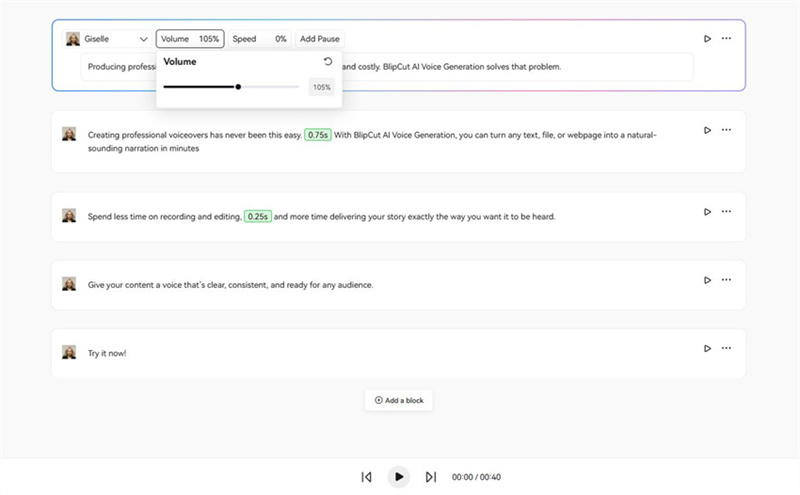





Blake Keeley
Editor-in-Chief at BlipCut with over three years of experience, focused on new trends and AI features to keep content fresh and engaging.
(Click to rate this post)